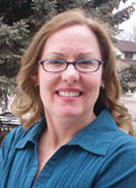The Harvard Family Research Project separated from the Harvard Graduate School of Education to become the Global Family Research Project as of January 1, 2017. It is no longer affiliated with Harvard University.

|
August 2009 Complementary Learning Connections With Out-of-School Time Programs in NebraskaLisa St. Clair
|
FINE: The Family Involvement Network of Educators
![]() The FINE Newsletter shares the newest and best family involvement research and resources from HFRP and other field leaders.
The FINE Newsletter shares the newest and best family involvement research and resources from HFRP and other field leaders.
FINE Newsletter, Volume I, Issue 3
Issue Topic: Family Involvement and Out-of-School Time
Voices From the Field
When families, schools, and out-of-school supports work together, children are more likely to succeed. Lisa St. Clair writes about how the Nebraska State Parental Information and Resource Center is using a complementary learning approach to link family support programs with schools, early childhood programs, and out-of-school time programs.
The Nebraska State PIRC (Parental Information and Resource Center) has taken a unique step in systematically connecting its family engagement efforts with after school programs, Title I schools, and early childhood programs. This work began at the state level, with the implementation of a statewide advisory board which includes Nebraska’s Title I Director, 21st Century Community Learning Center Director, leaders in the early childhood field, representatives from philanthropy and foundations, higher education, tribal reservations, and state entities such as Nebraska Association of School Boards, PTA and PTI (Parent Training & Information), and school leaders from around Nebraska.
By sharing information, planning, and decision making at the state level, this board uses a complementary learning approach to purposefully improve outcomes for students. One example of an outcome from this effort is the implementation of school-based PIRC councils across Nebraska. Nebraska is piloting the use of PIRC Councils—essentially principals’ advisory councils—to systematically connect schools with families and early childhood and out-of-school time (OST) programs, particularly in community schools.
These councils include principals, parents representing the community, teachers, and staff from early childhood and OST programs. Members meet regularly to share decision making on topics ranging from school improvement to parent involvement and homework policies. Parents of three year olds not yet attending school may express different needs than parents of fifth-grade students, yet matters such as transitions, communication, and ensuring success are important to everyone. In high schools, councils may examine dropout rates and work together to strengthen prevention supports.
Connecting the Nebraska PIRC’s family engagement model to other learning settings has resulted in creating a broader group of stakeholders who share responsibility for student learning. Ryan Mohling, Site Director for one of the Lincoln Community Learning Center Initiative’s OST programs and member of a PIRC council notes, “There has been an increased feeling of ownership when it comes to discussing the importance of our school-community compact, homework policy, etc.” By sharing planning and decision making, stakeholders also share a commitment to strengthening the web of supports surrounding each student, thereby ensuring more positive outcomes for all students!
This article is part of the August 2009 FINE Newsletter. The FINE Newsletter shares the newest and best family involvement research and resources from Harvard Family Research Project and other field leaders. To access the FINE Newsletter Archive, visit www.hfrp.org/FINENewsletter.
